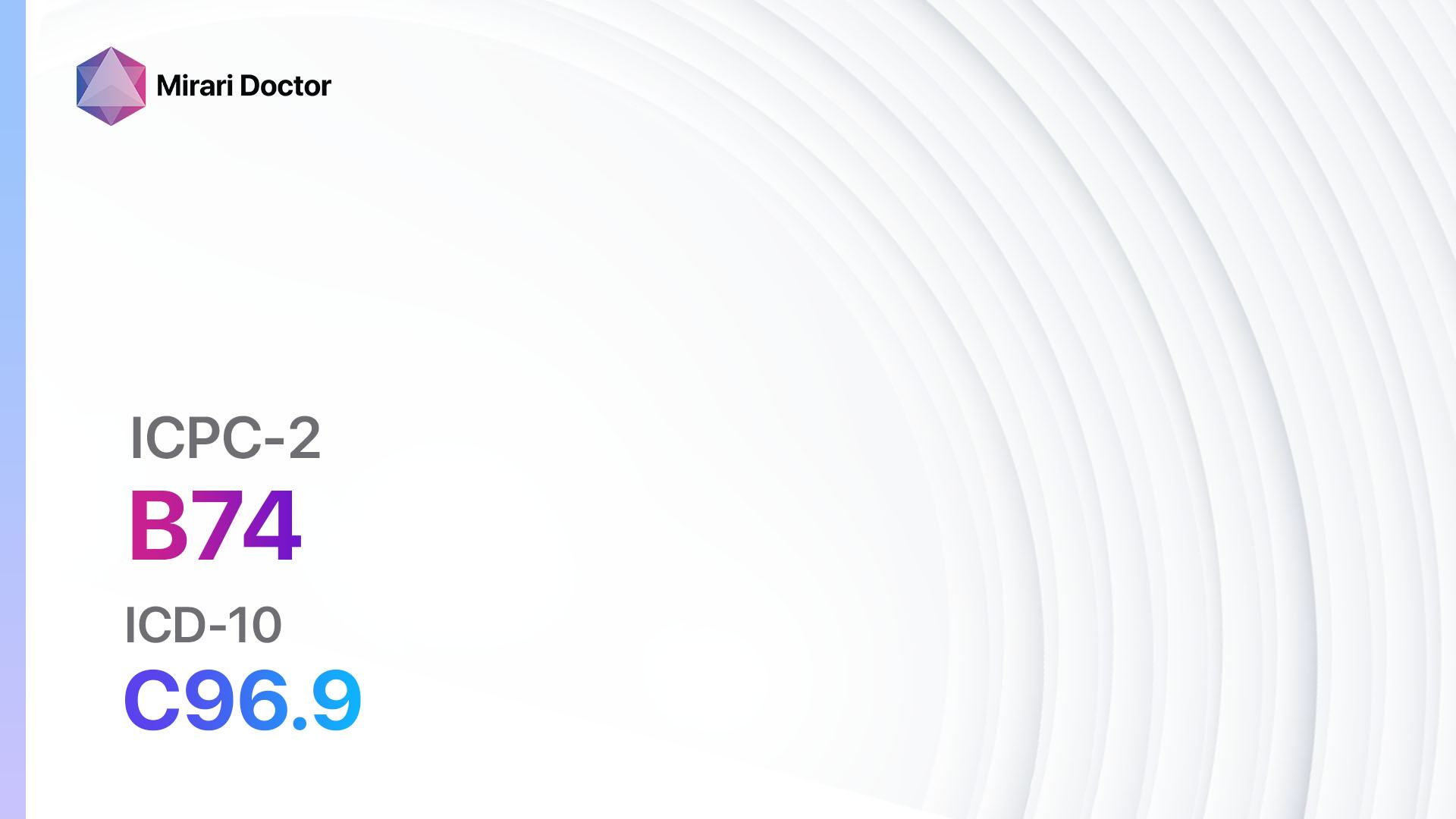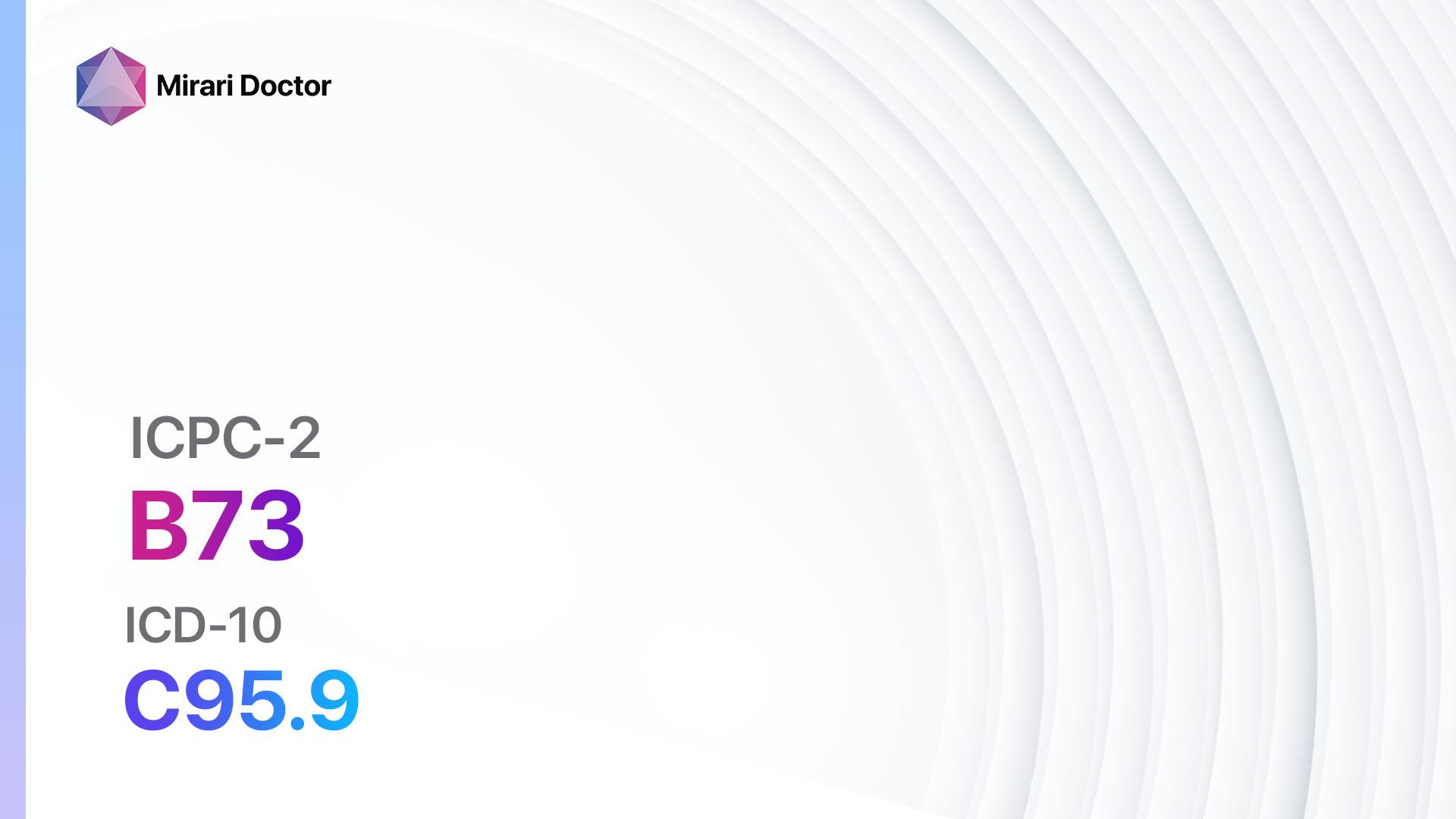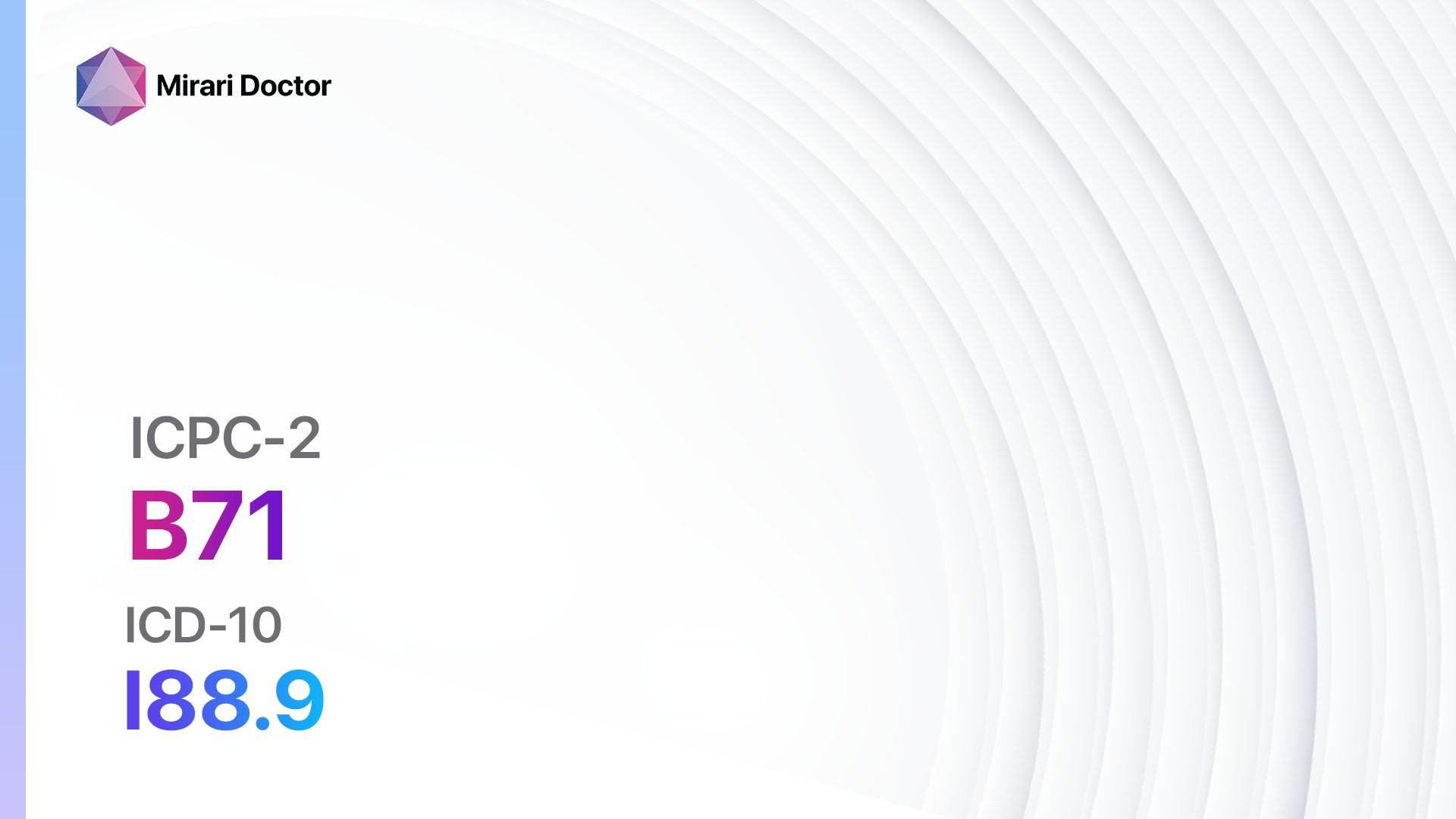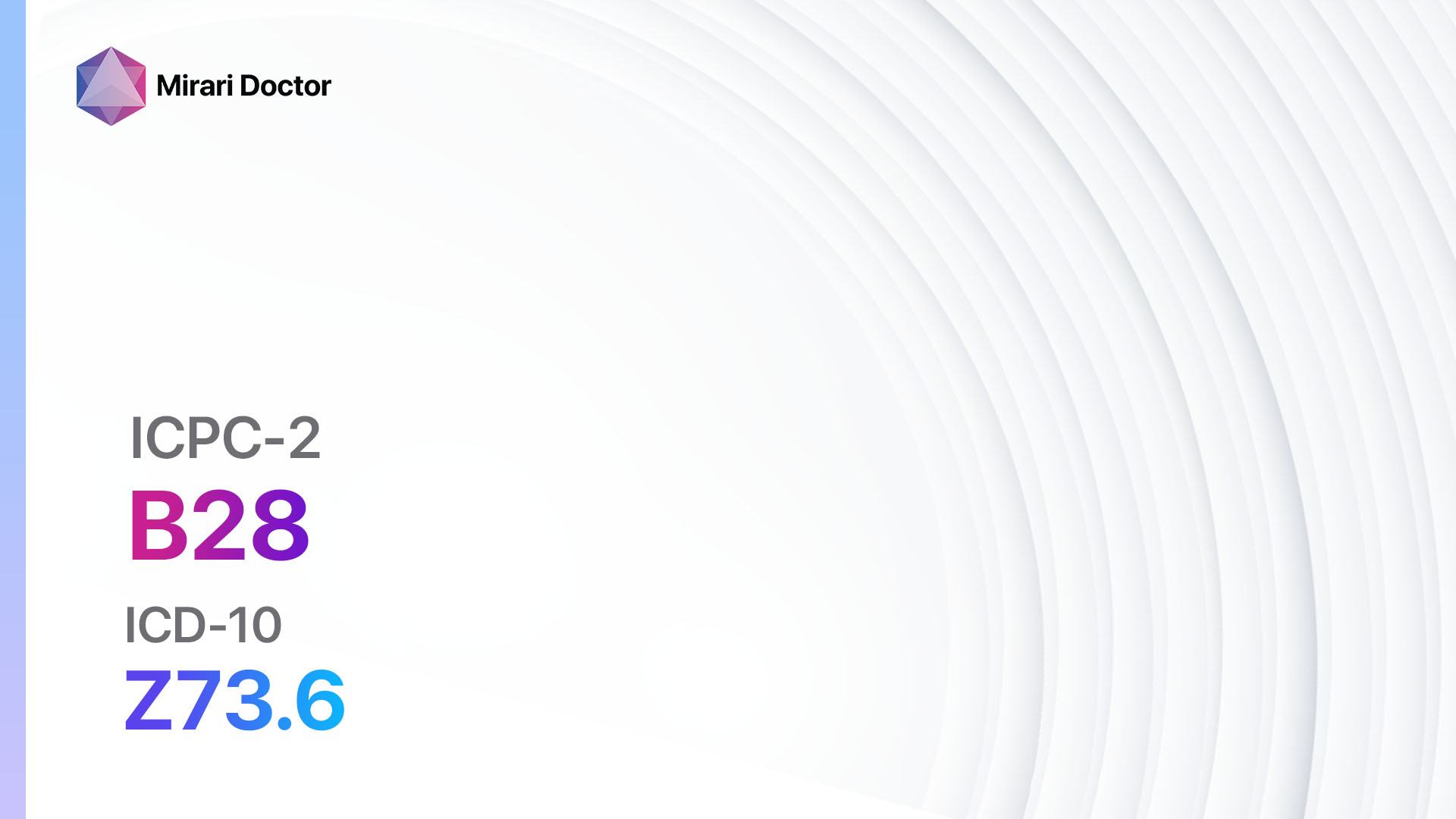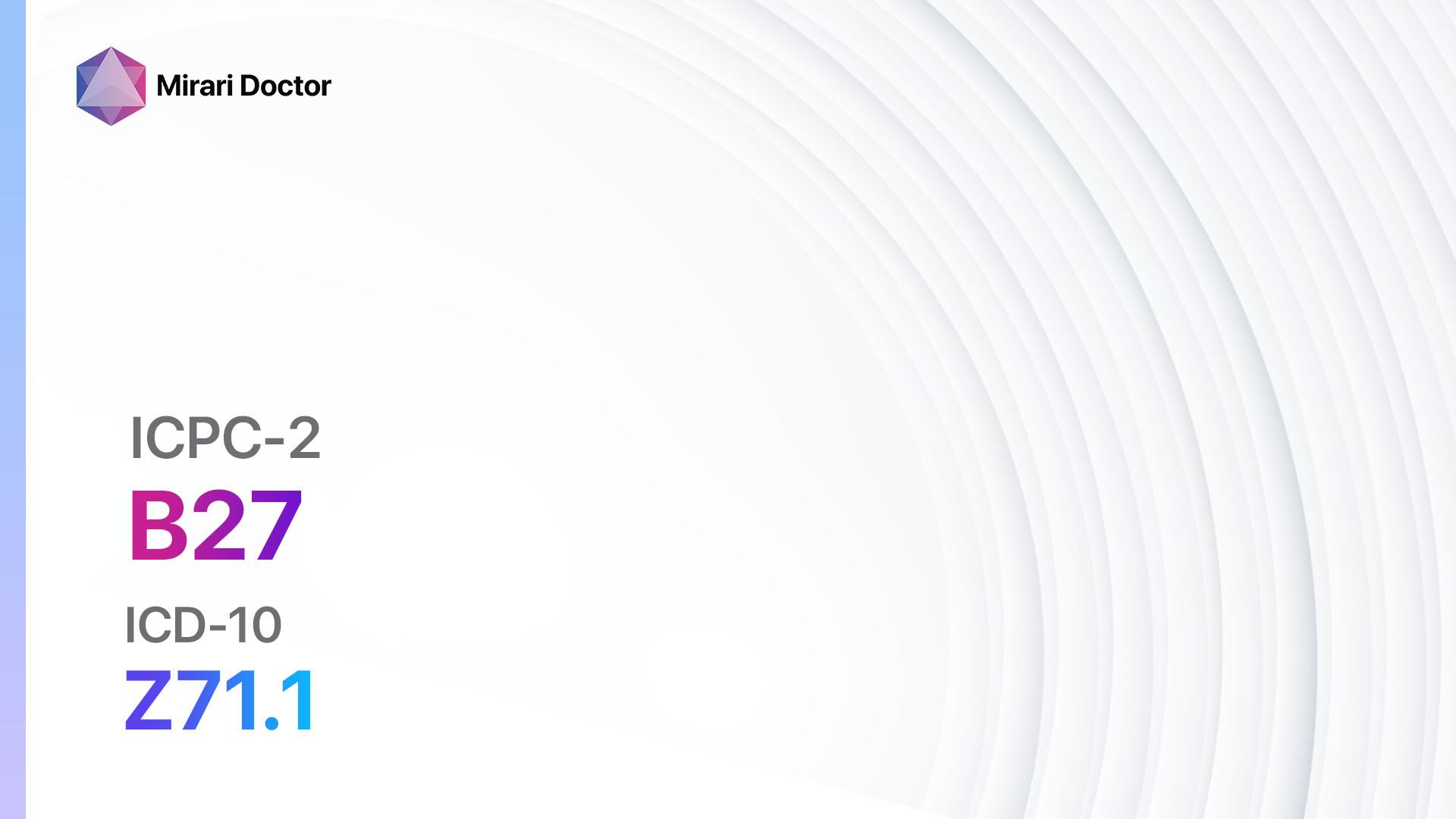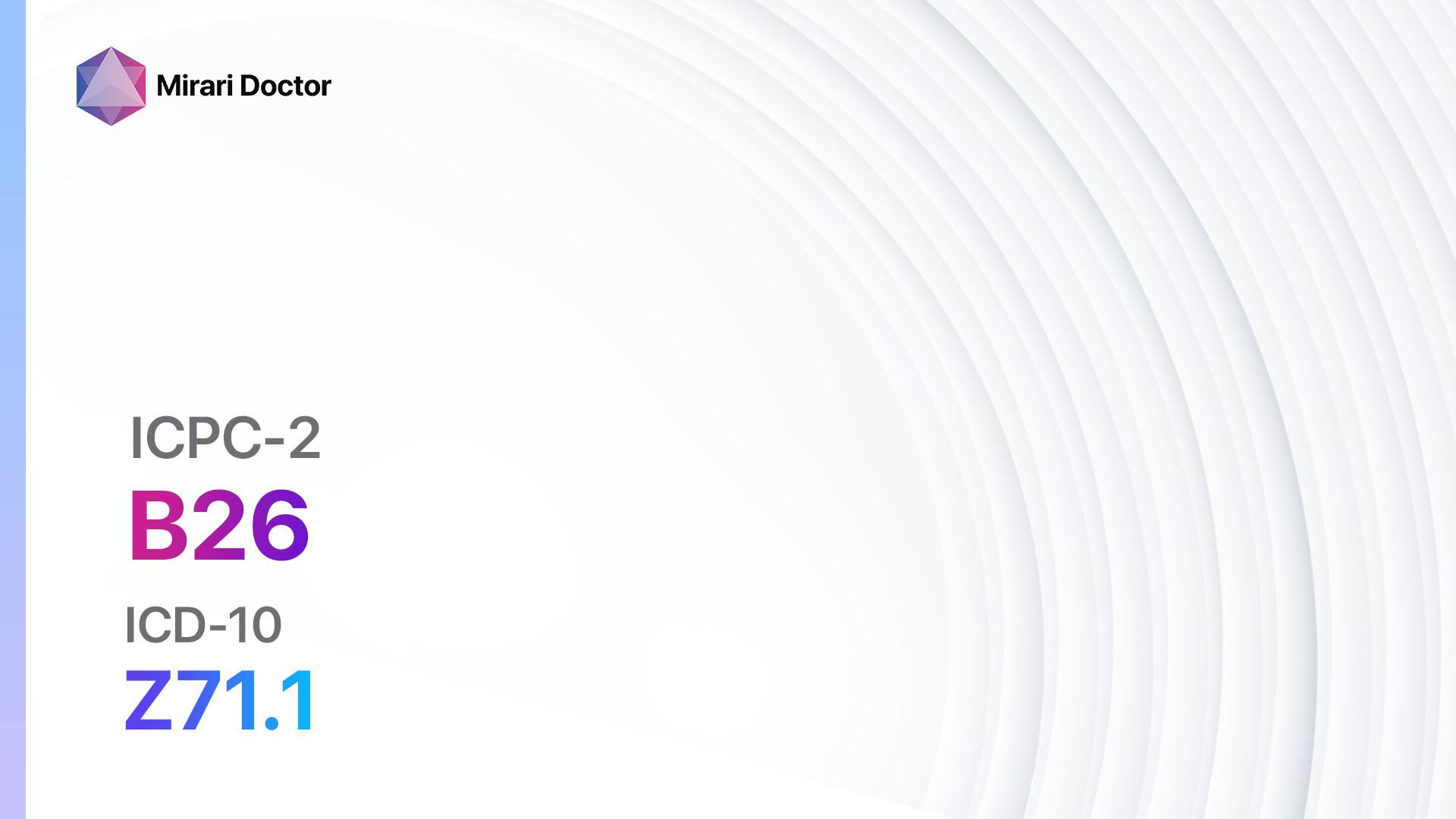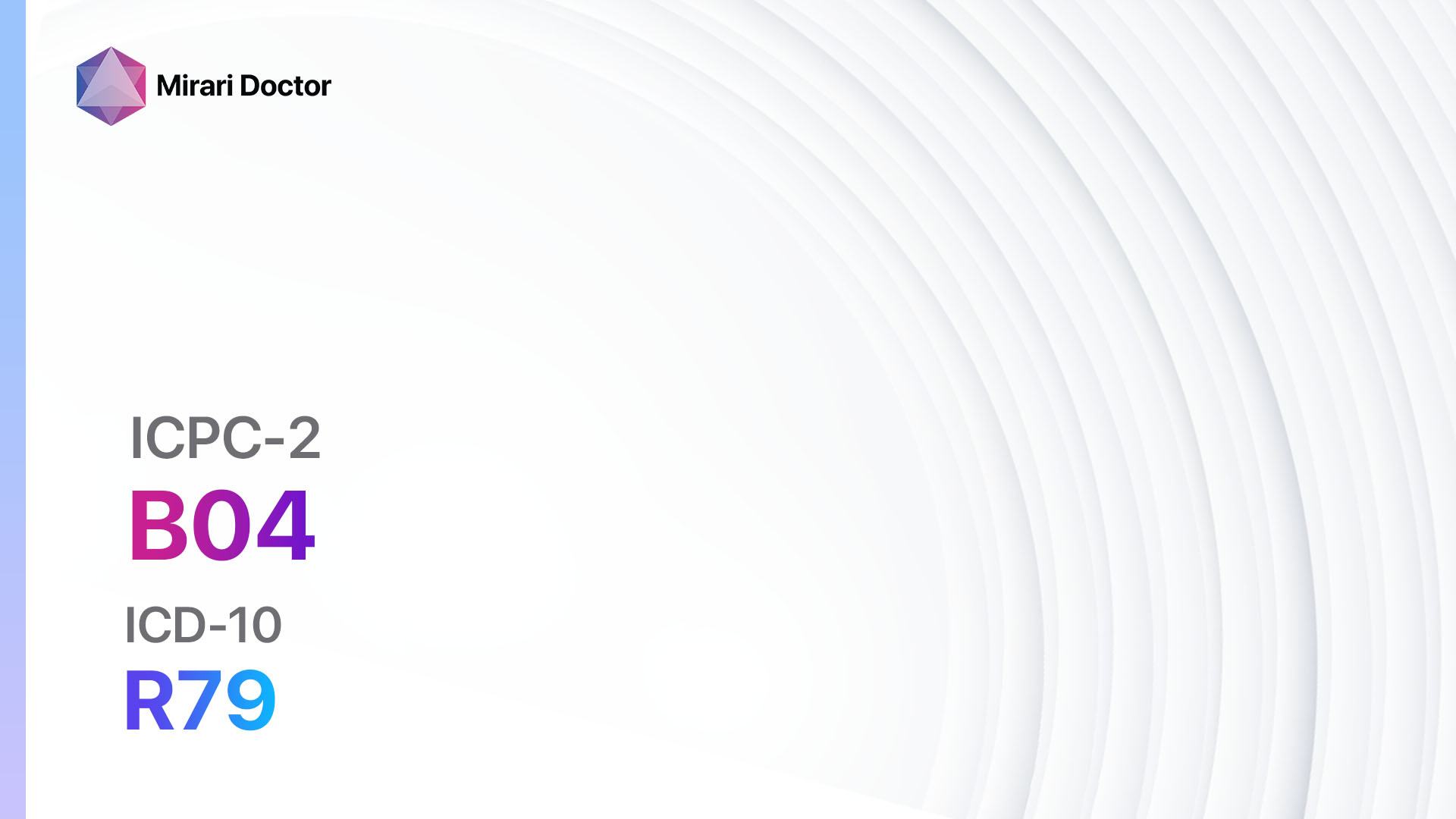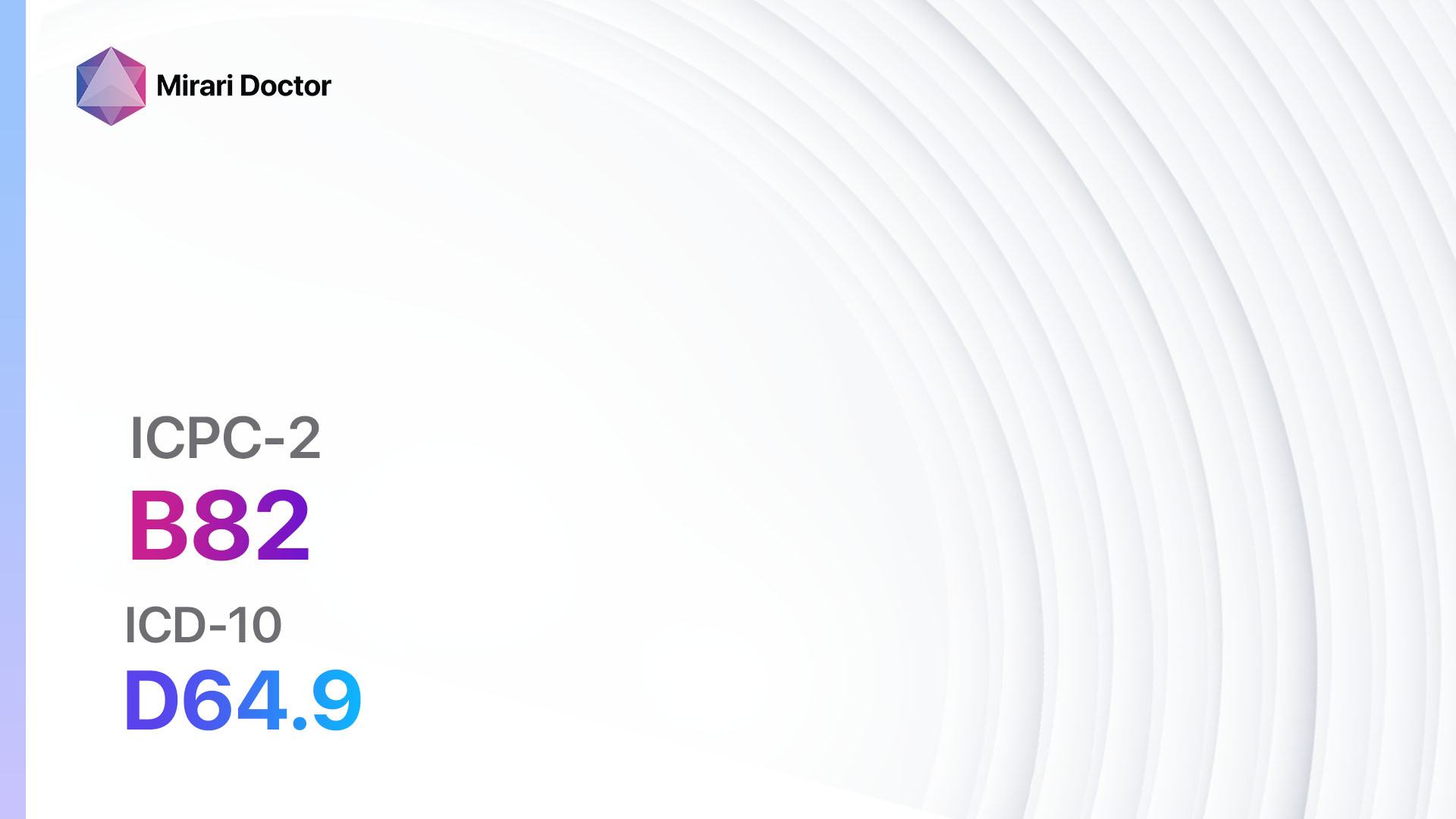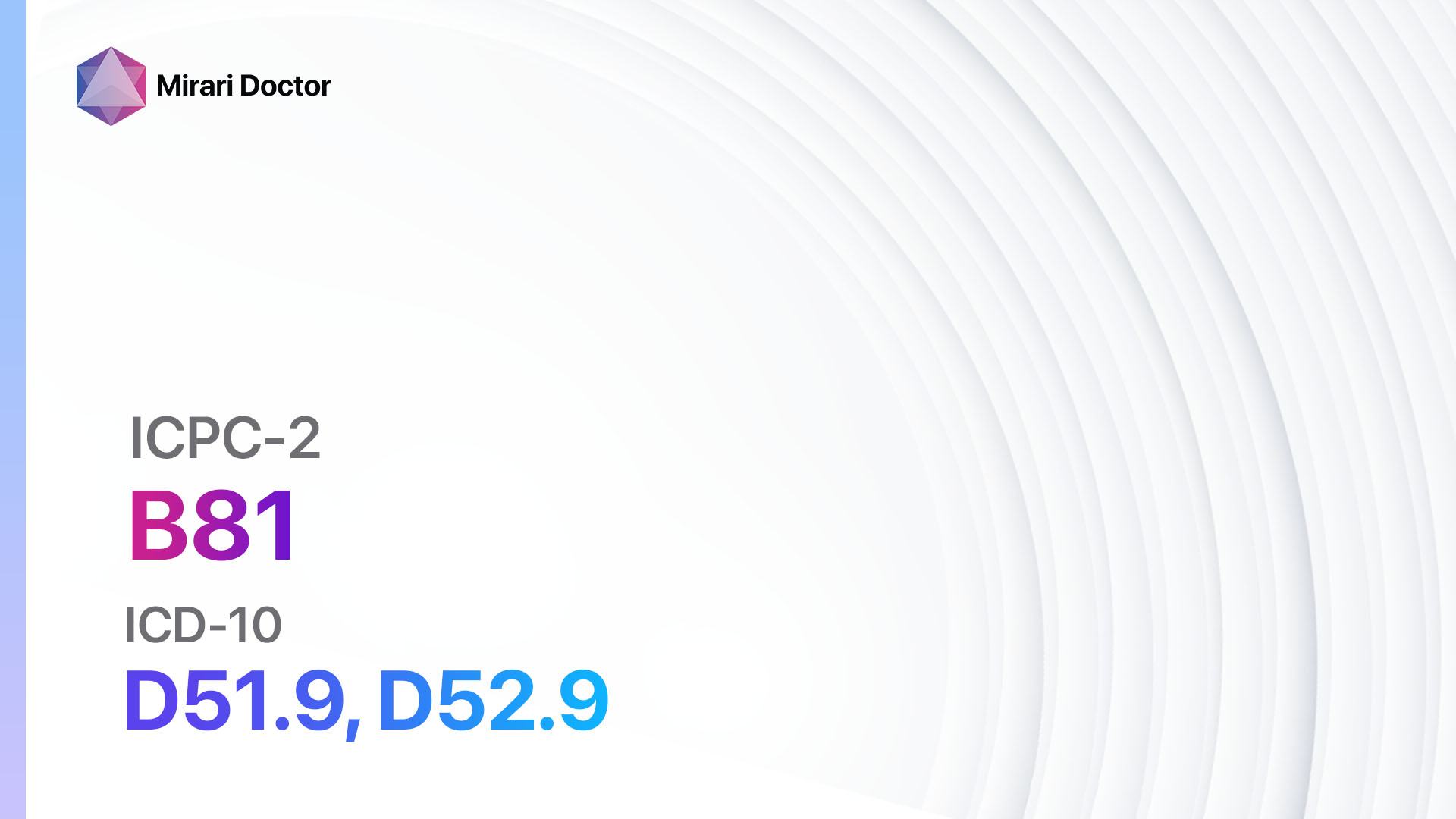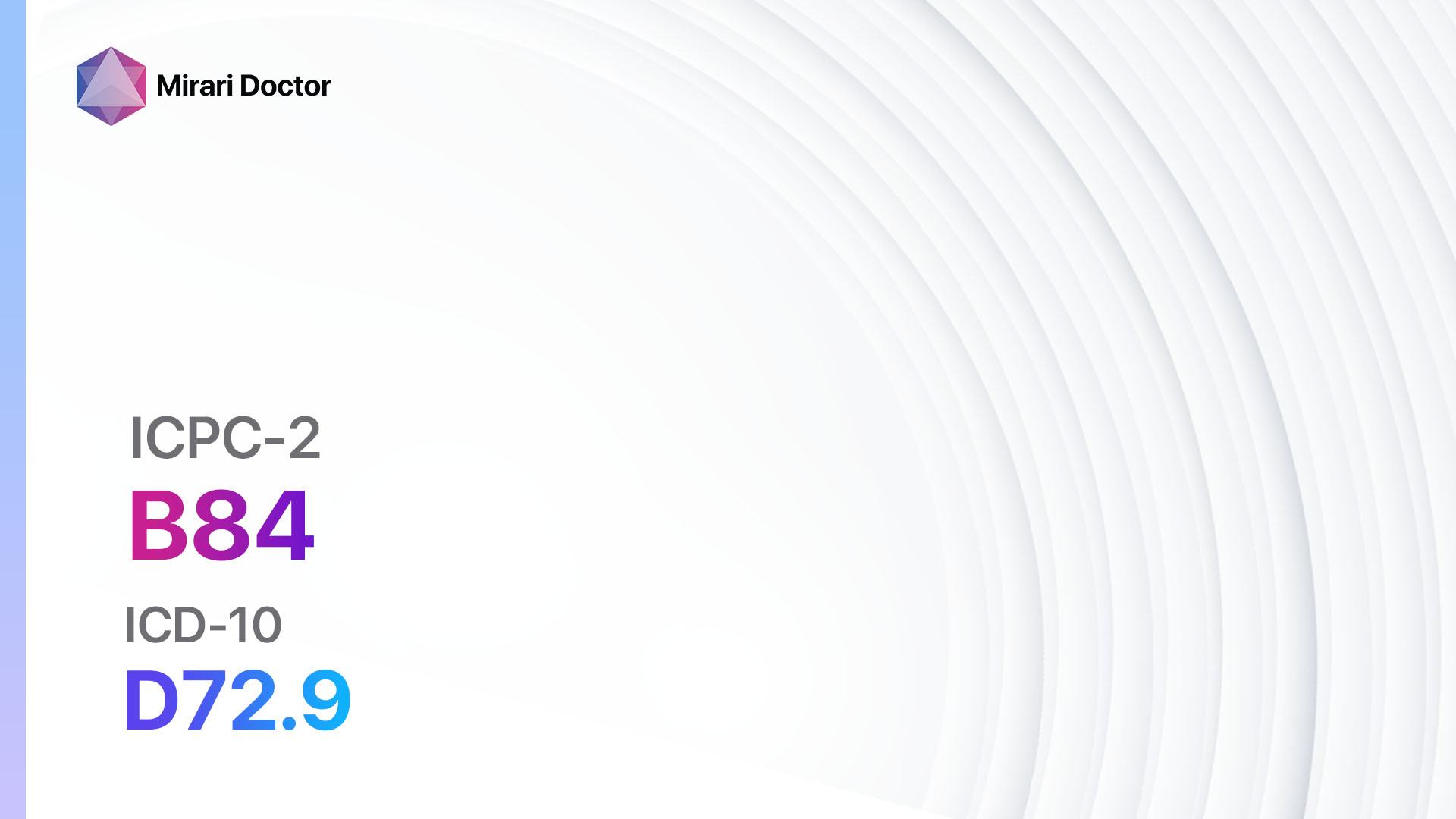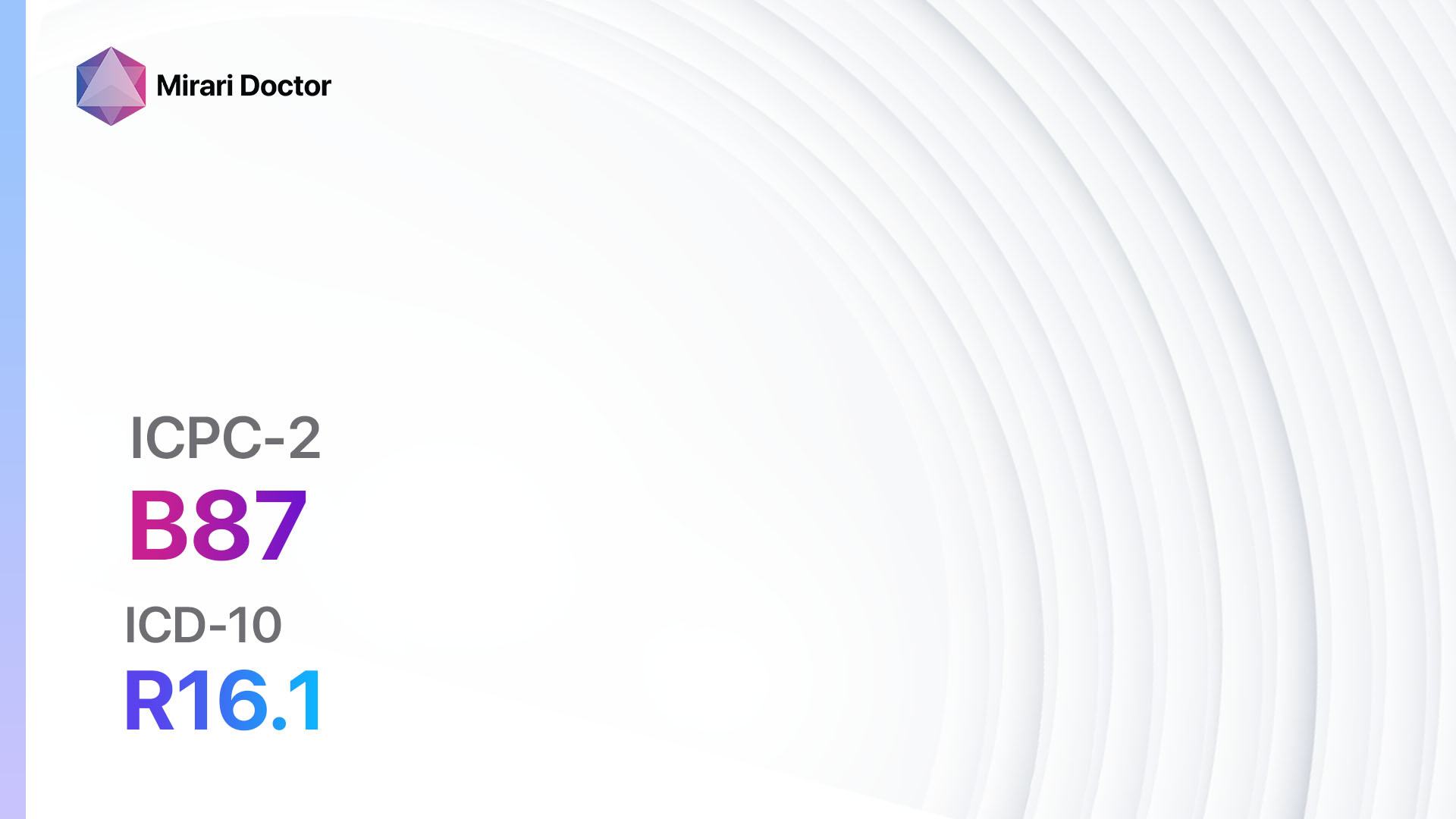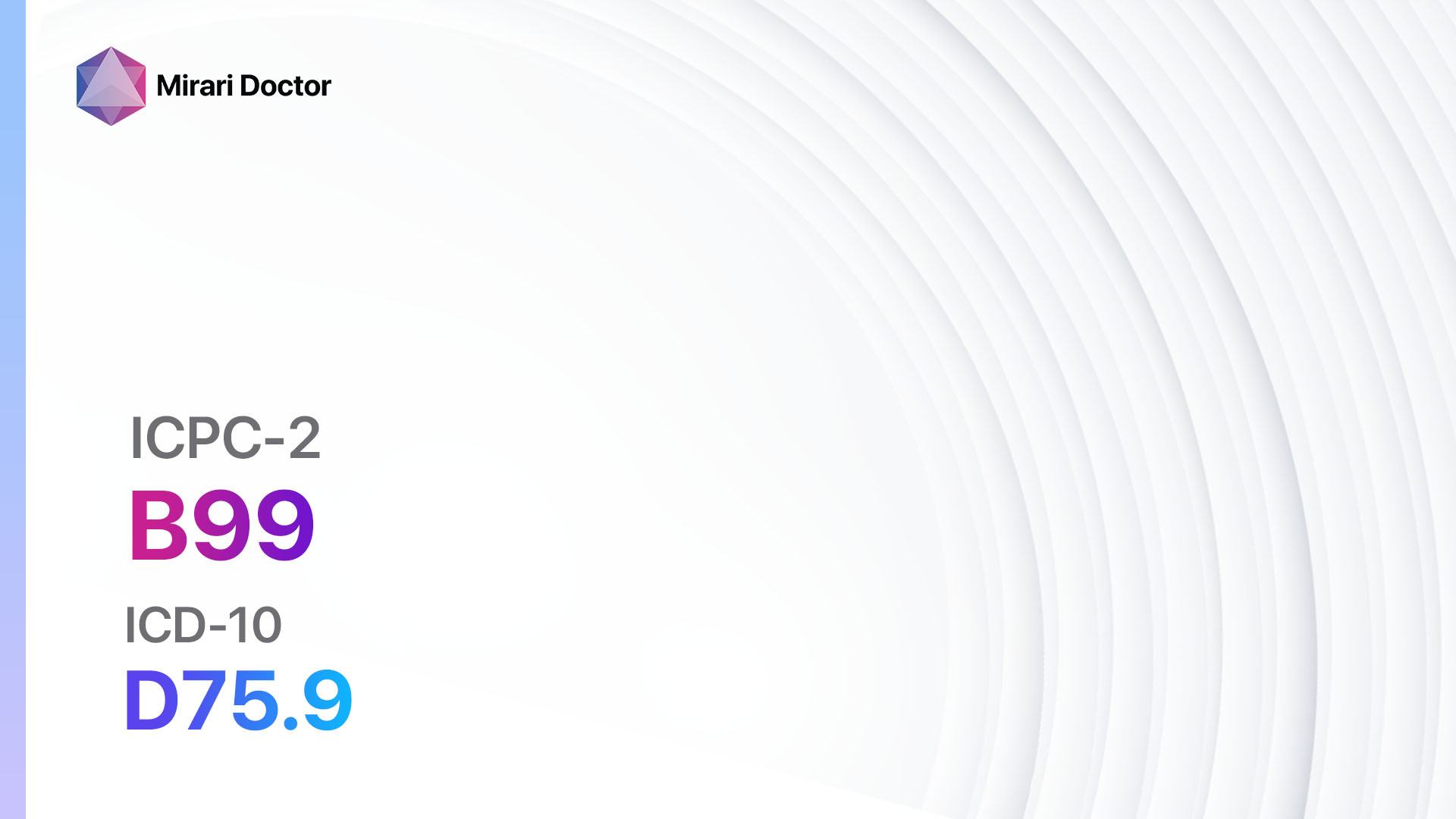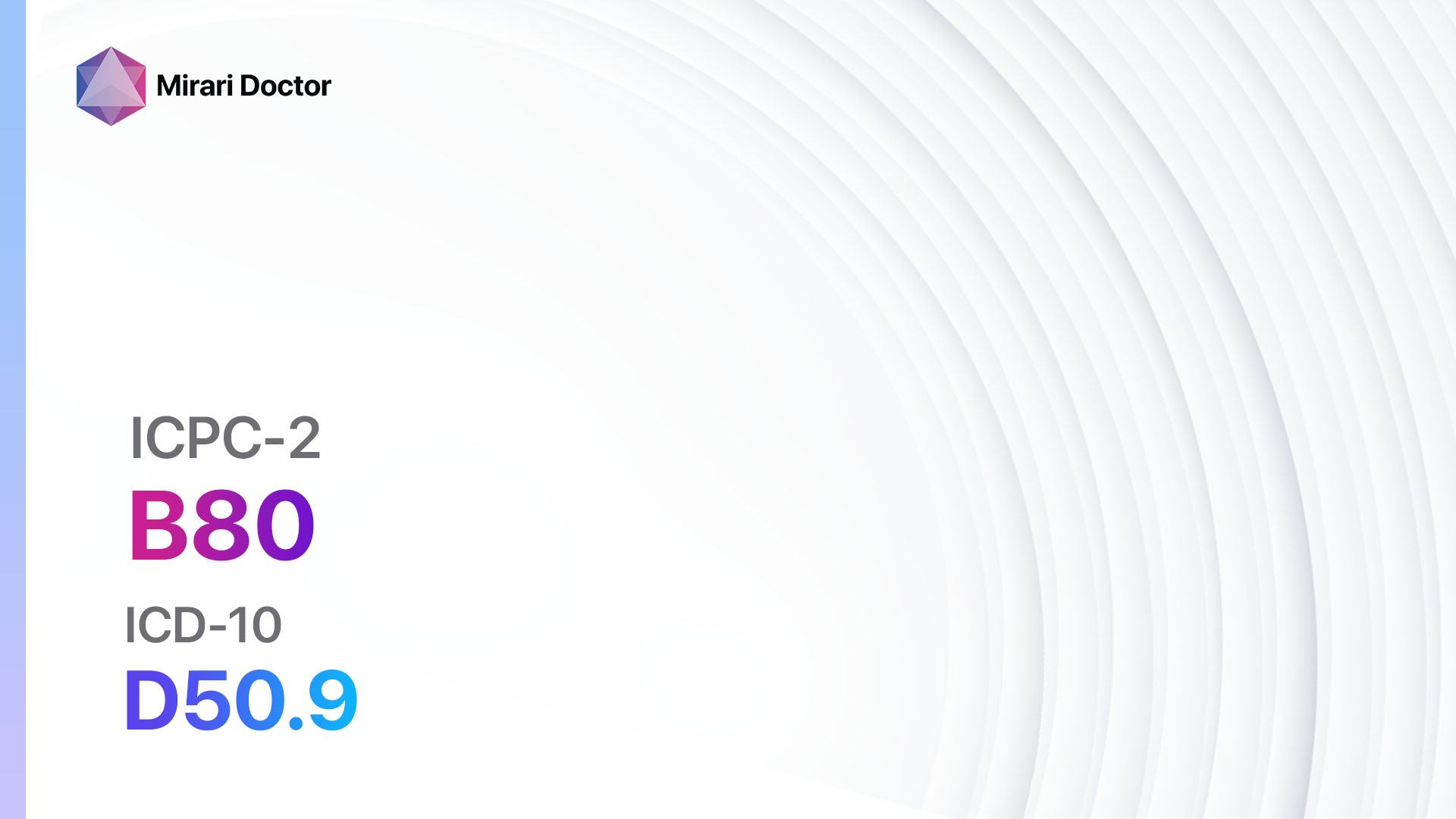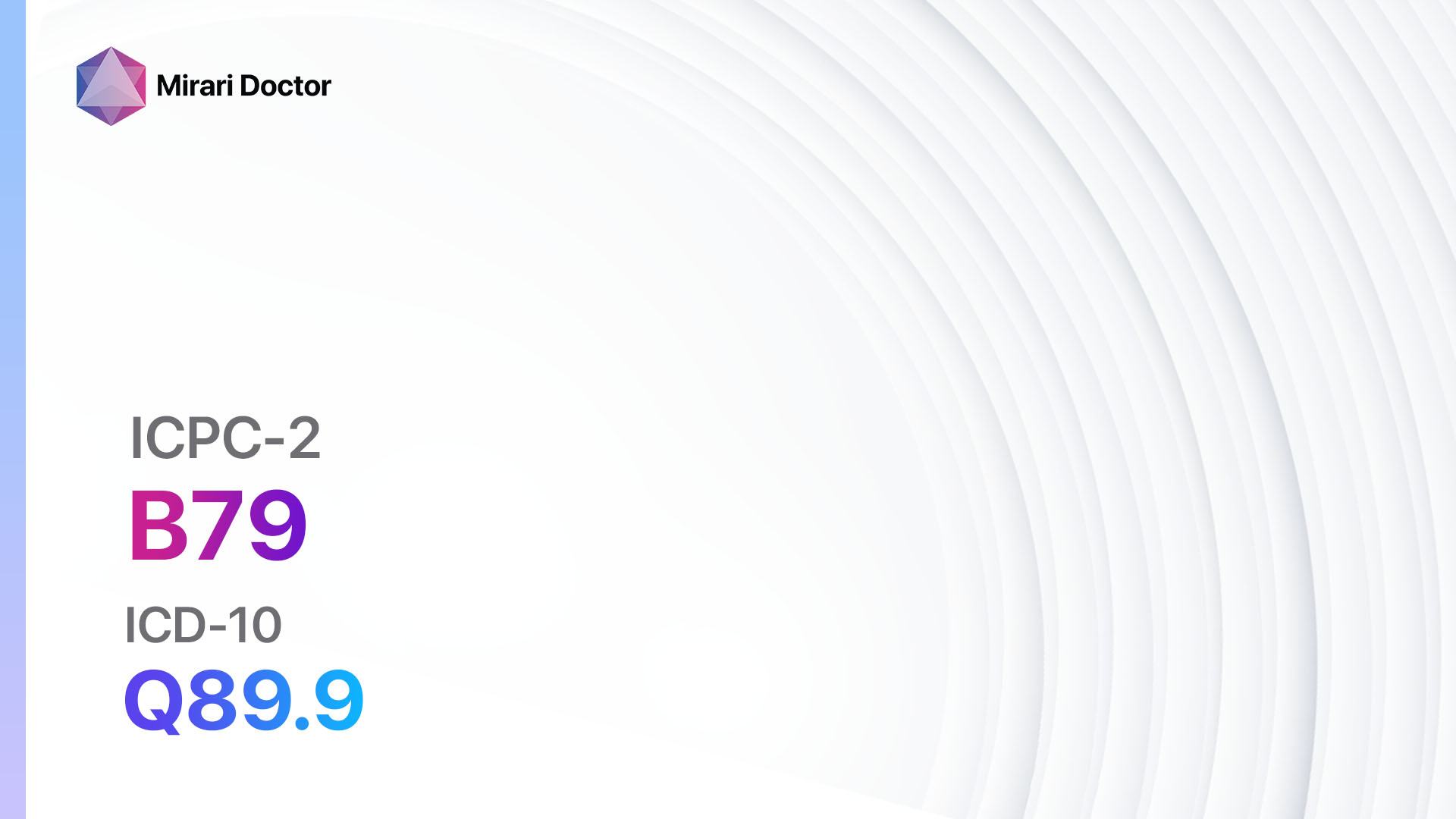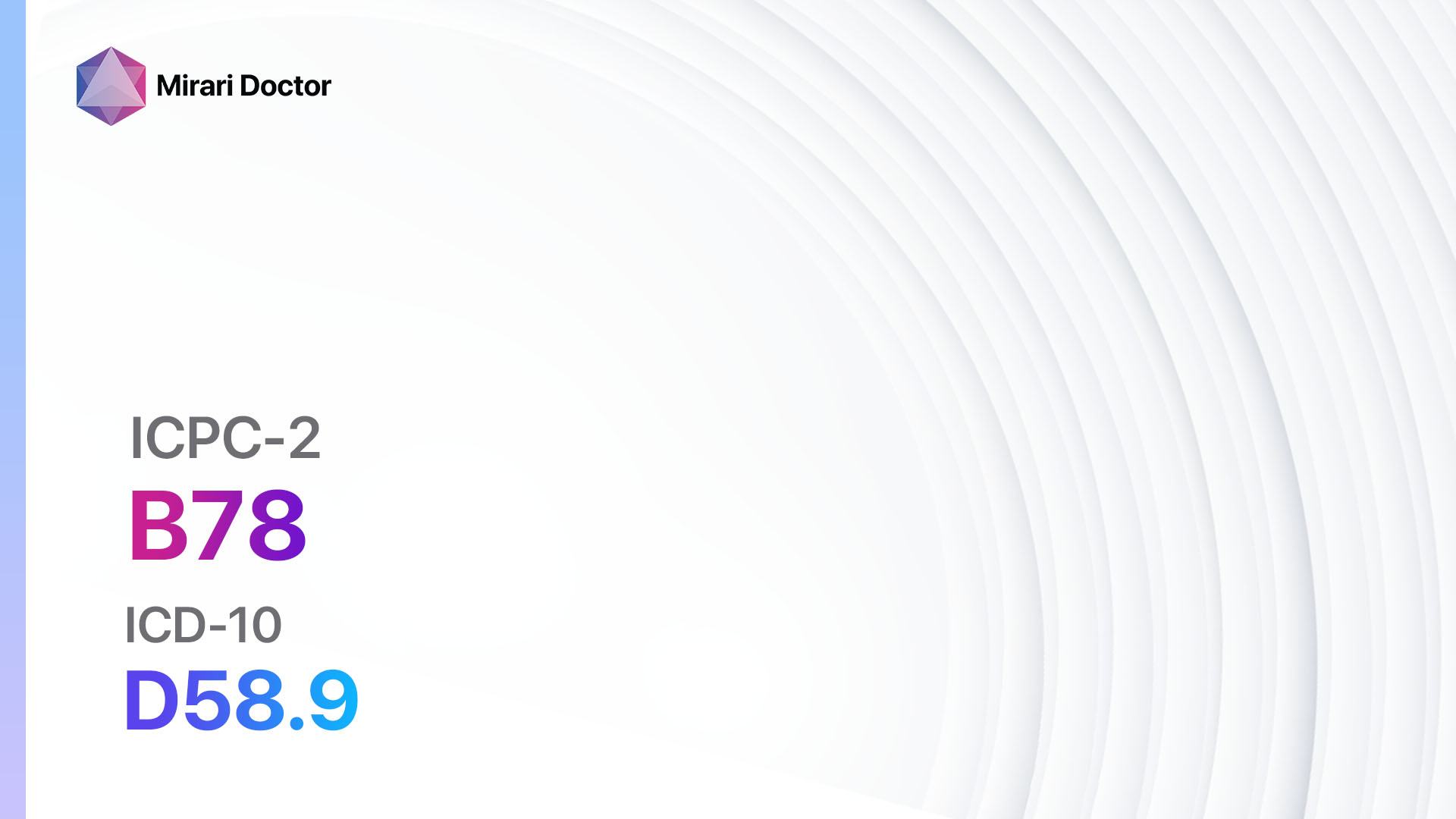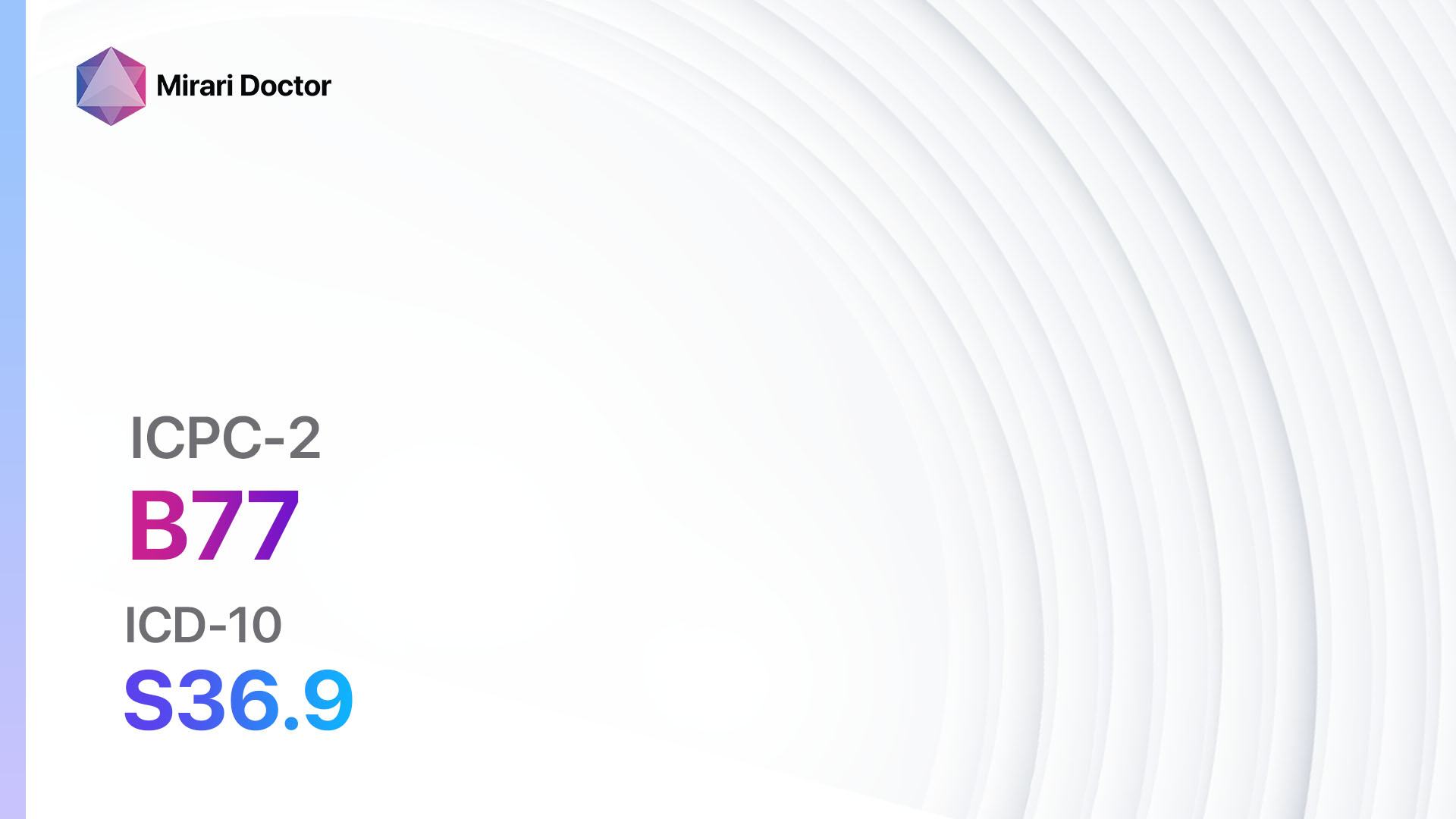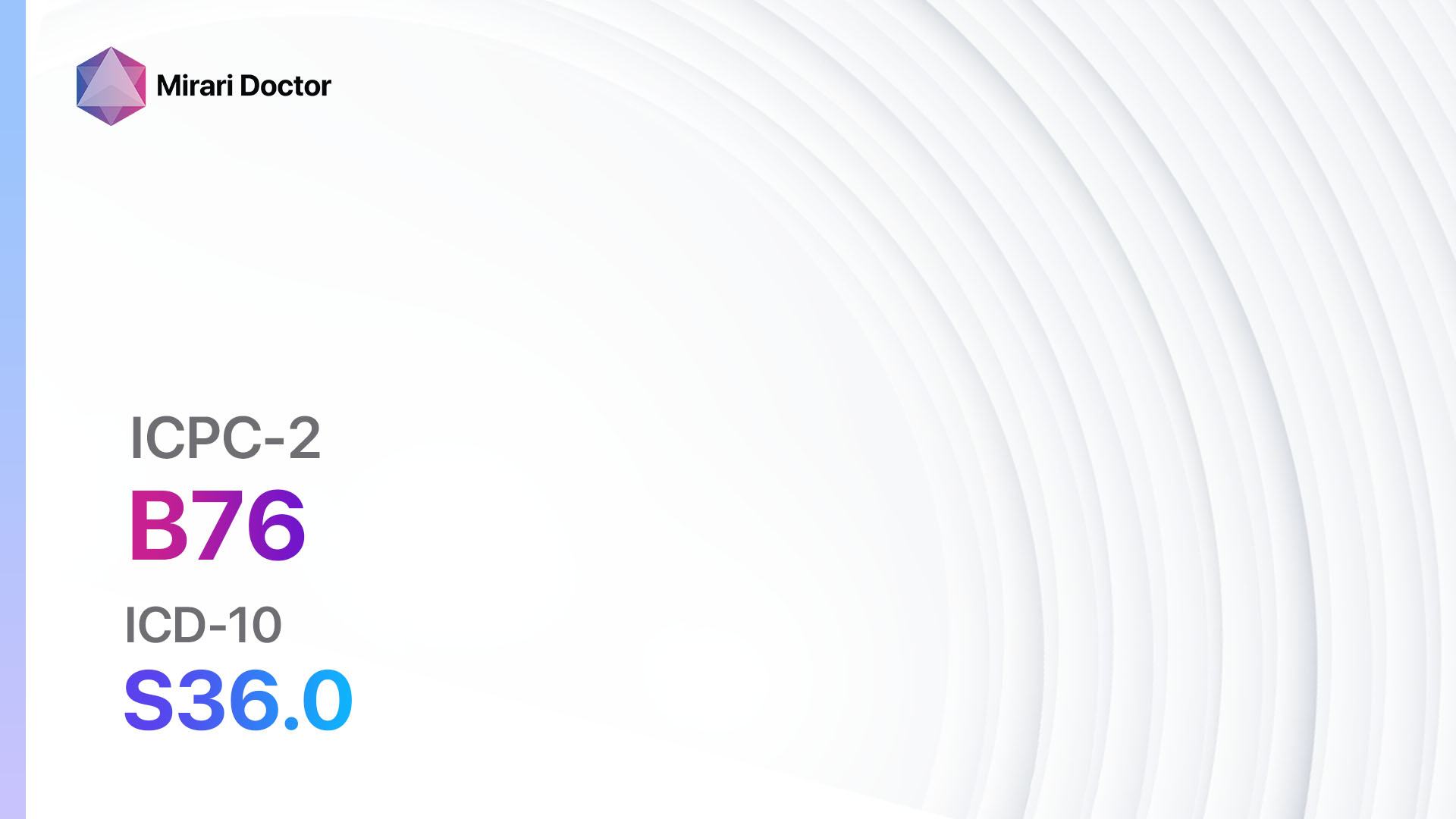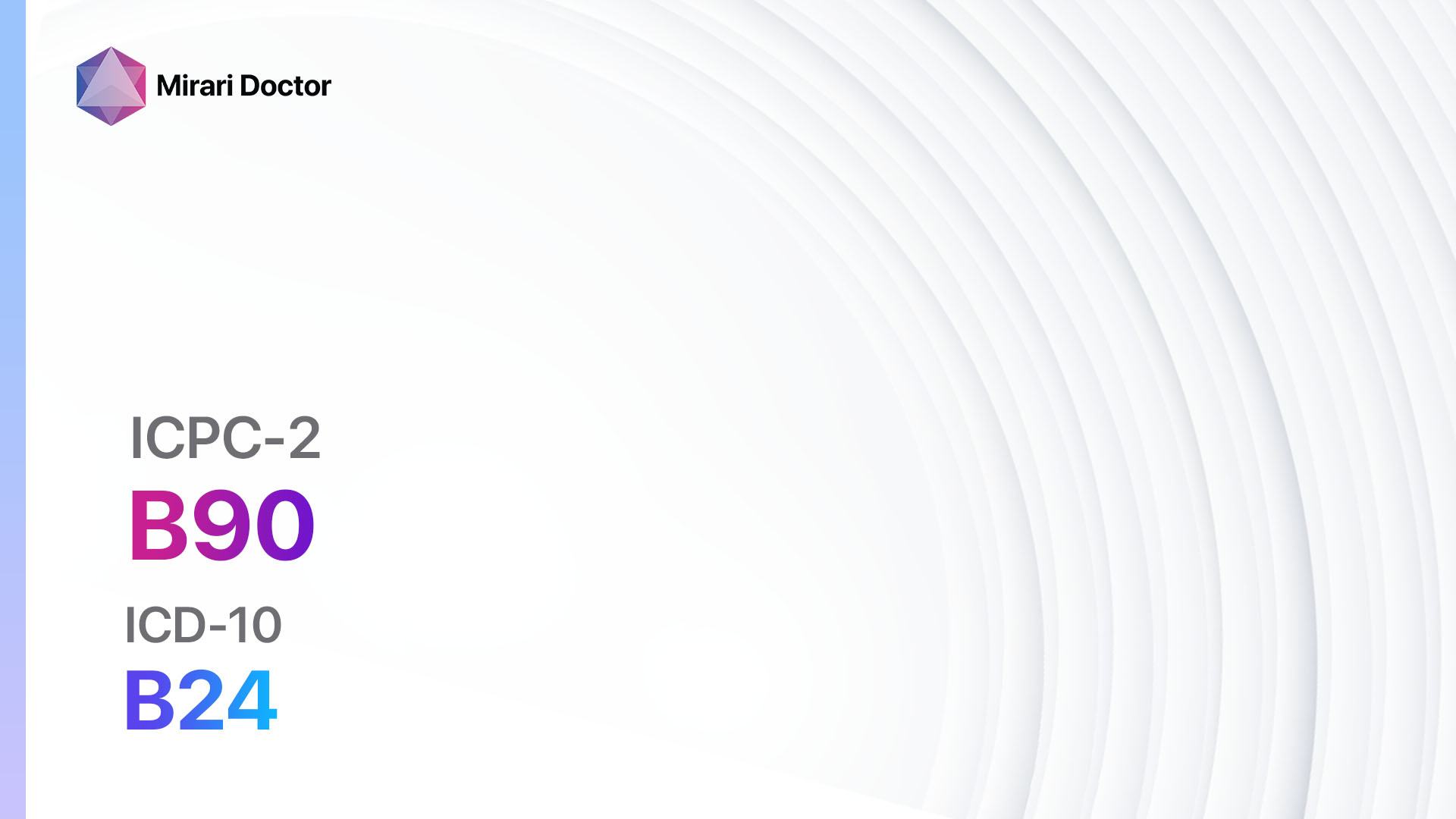
Introduction
HIV infection/AIDS is a chronic viral infection that attacks the body’s immune system, specifically targeting white blood cells called CD4 T-cells, which weakens the ability to fight off infections and diseases[1]. According to WHO data, approximately 39.9 million people worldwide are living with HIV as of 2023, making it a significant global health concern[2]. This comprehensive guide provides an evidence-based overview of the diagnosis and management of HIV infection/AIDS based on current medical standards.
Codes
- ICPC-2 Code: B90 HIV-infection/AIDS
- ICD-10 Code: B24 Unspecified human immunodeficiency virus [HIV] disease[3]
Symptoms
The symptoms of HIV infection vary significantly depending on the stage of infection[4]:
Acute HIV Infection (2-4 weeks after exposure):
- Fever: Often the first symptom to appear[5]
- Fatigue: Persistent tiredness and lack of energy[4]
- Night sweats: Excessive sweating during sleep[4]
- Swollen lymph nodes: Large, tender lymph nodes in the neck, armpits, or groin[6]
- Rash: Maculopapular rash typically on the trunk, occurring in 20-50% of cases[6]
- Sore throat: Throat inflammation and discomfort[5]
- Headache: Often severe and persistent[6]
Chronic HIV Infection (Progressive stage):
- Weight loss: Unexplained, gradual weight reduction[4]
- Diarrhea: Frequent loose stools that may persist[4]
- Oral thrush: White patches in the mouth or throat caused by Candida infection[7]
- Recurrent infections: Frequent or severe infections due to compromised immunity[4]
Advanced HIV Disease/AIDS:
- Severe opportunistic infections: Tuberculosis, cryptococcal meningitis, severe bacterial infections[1]
- Cancers: Lymphomas and Kaposi’s sarcoma[1]
- Rapid weight loss and extreme fatigue[8]
Causes
Primary Cause
Human Immunodeficiency Virus (HIV): A retrovirus that specifically targets and destroys CD4 T-cells, progressively weakening the immune system[9].
Transmission Routes
HIV is transmitted through specific body fluids that must come into contact with mucous membranes, damaged tissue, or be directly injected into the bloodstream[10]:
- Sexual transmission: Unprotected anal or vaginal sex (most common route globally)[10]
- Blood-borne transmission: Sharing needles, syringes, or other injection equipment[11]
- Perinatal transmission: From mother to child during pregnancy, childbirth, or breastfeeding[10]
- Occupational exposure: Healthcare workers through needlestick injuries (rare)[12]
Important Note: HIV cannot be transmitted through casual contact, saliva, tears, sweat, or sharing food[1].
Diagnostic Steps
Medical History
Comprehensive assessment should include[13]:
- Sexual history: Number of partners, condom use, history of sexually transmitted infections
- Risk behavior assessment: Intravenous drug use, needle sharing, high-risk exposures
- Symptom evaluation: Duration and severity of HIV-related symptoms
- Medical background: Underlying conditions, medications affecting immune function
- Travel history: Recent travel to high-prevalence areas
Physical Examination
Thorough examination focusing on[14]:
- Skin assessment: Inspection for rashes, lesions, or opportunistic infections
- Lymph node palpation: Evaluation for enlargement, consistency, and mobility
- Oral cavity examination: Detection of oral thrush, hairy leukoplakia, or other lesions
- General assessment: Nutritional status, weight loss, and overall appearance
Laboratory Tests
Primary HIV Testing
- Fourth-generation antigen/antibody tests: Detect both HIV antibodies and p24 antigen with 99.7% sensitivity and 98.5% specificity[15]
- HIV RNA tests: Detect viral genetic material, useful during acute infection[16]
- Rapid diagnostic tests: Provide same-day results with high accuracy[1]
Confirmatory and Monitoring Tests
- CD4 T-cell count: Measures immune system status; normal range is 500-1,200 cells/mm³[17]
- Viral load test: Quantifies HIV RNA in blood; undetectable levels indicate treatment success[18]
- Drug resistance testing: Identifies mutations that confer resistance to antiretroviral drugs[19]
Additional Testing
- Sexually transmitted infection screening: Syphilis, gonorrhea, chlamydia, hepatitis B and C[20]
- Tuberculosis testing: TST or IGRA, as HIV patients have 20-fold increased TB risk[21]
- Baseline laboratory studies: Complete blood count, comprehensive metabolic panel, liver function tests[22]
Window Period Considerations
Modern HIV tests have varying window periods[23]:
- Fourth-generation tests: 14-45 days
- Third-generation antibody tests: 23-90 days
- Rapid tests: 18-90 days
Possible Interventions
Traditional Medical Interventions
Antiretroviral Therapy (ART) – First-Line Treatments
1. Bictegravir/Tenofovir Alafenamide/Emtricitabine (Biktarvy)
- Cost: $3,000-4,000 per month[24]
- Mechanism: Integrase inhibitor combination with high efficacy
- Side effects: Headache, diarrhea, nausea
- Advantages: High barrier to resistance, minimal drug interactions
2. Dolutegravir-based regimens
- Cost: $2,000-3,000 per month[24]
- Side effects: Headache, insomnia, weight gain
- Monitoring: Liver function tests required
- Contraindications: Caution in patients with psychiatric disorders
3. Tenofovir/Emtricitabine combinations
- Cost: $1,500-2,500 per month for brand names[25]
- Side effects: Kidney dysfunction, bone density loss
- Monitoring: Regular kidney function and bone density assessment
- Warning: Requires dose adjustment in renal impairment
4. Efavirenz-based regimens (less commonly used)
- Cost: $1,000-2,000 per month[25]
- Side effects: CNS effects (dizziness, vivid dreams), rash
- Contraindications: Pregnancy, severe psychiatric illness
- Drug interactions: Significant CYP450 interactions
Alternative Antiretroviral Options
- Rilpivirine-based regimens: For treatment-naive patients with low viral loads
- Protease inhibitor combinations: Darunavir/ritonavir for treatment-experienced patients
- Entry/fusion inhibitors: Maraviroc for CCR5-tropic virus
- Long-acting injectables: Cabotegravir/rilpivirine monthly injections[26]
Cost-Effectiveness Considerations
Studies demonstrate that newer antiretroviral drugs provide substantial benefits with incremental cost-effectiveness ratios of $54,559-75,556 per quality-adjusted life-year (QALY), which falls within acceptable thresholds[27].
Alternative and Complementary Interventions
Evidence-Based Complementary Therapies
- Yoga: Research shows benefits for CD4 cell levels, anxiety reduction, and overall well-being[28]
- Meditation and mindfulness: Effective for stress reduction and improved coping mechanisms[29]
- Massage therapy: May reduce depression, anxiety, and improve quality of life[29]
- Acupuncture: Potentially helpful for nausea and treatment-related side effects[28]
Nutritional and Herbal Considerations
- Milk thistle: Shows promise for liver support without significant drug interactions[28]
- Medical marijuana: May help with appetite loss and nausea where legally available[28]
- Caution required: Many herbal supplements can interact with antiretroviral medications[28]
Lifestyle Interventions
Critical Lifestyle Factors
- Medication adherence: Taking ART as prescribed is crucial; adherence >95% is associated with optimal outcomes[30]
- Safe sex practices: Consistent condom use reduces transmission risk by approximately 80%[31]
- Harm reduction: Clean needle programs and avoiding needle sharing prevent reinfection[32]
Health Optimization Strategies
- Nutritional support: Balanced diet rich in fruits, vegetables, and lean proteins supports immune function[33]
- Regular exercise: Moderate physical activity 3-4 times weekly improves mental and physical health[33]
- Oral hygiene: Essential due to increased risk of oral infections; regular dental care recommended[33]
- Stress management: Evidence-based techniques including deep breathing and mindfulness[34]
- Sleep optimization: Adequate sleep is crucial for immune system function[33]
Follow-up and Patient Education
Monitoring Schedule
- Initial phase: Monthly visits for first 3-6 months after starting ART[35]
- Stable patients: Every 3-6 months with viral load and CD4 monitoring
- Annual assessments: Comprehensive screening for opportunistic infections and comorbidities
Essential Patient Education Topics
-
- Treatment goals: Achieving and maintaining undetectable viral load (U=U: Undetectable = Untransmittable)[36]
- Adherence importance: Missing doses can lead to drug resistance and treatment failure
- Partner notification: Importance of informing sexual partners and encouraging testing
- Prevention methods: PrEP for HIV-negative partners, safe injection practices
- Support resources: Connection to HIV support groups and mental health services
Mirari Cold Plasma Alternative Intervention
Understanding Mirari Cold Plasma
- Safe and Non-Invasive Treatment: Mirari Cold Plasma is a safe and non-invasive treatment option for various skin conditions. It does not require incisions, minimizing the risk of scarring, bleeding, or tissue damage.
- Efficient Extraction of Foreign Bodies: Mirari Cold Plasma facilitates the removal of foreign bodies from the skin by degrading and dissociating organic matter, allowing easier access and extraction.
- Pain Reduction and Comfort: Mirari Cold Plasma has a local analgesic effect, providing pain relief during the treatment, making it more comfortable for the patient.
- Reduced Risk of Infection: Mirari Cold Plasma has antimicrobial properties, effectively killing bacteria and reducing the risk of infection.
- Accelerated Healing and Minimal Scarring: Mirari Cold Plasma stimulates wound healing and tissue regeneration, reducing healing time and minimizing the formation of scars.
Mirari Cold Plasma Prescription
Video instructions for using Mirari Cold Plasma Device – B90 HIV-infection/AIDS (ICD-10:B24)
| Mild | Moderate | Severe |
| Mode setting: 1 (Infection) Location: 7 (Neuro system & ENT) Morning: 15 minutes, Evening: 15 minutes |
Mode setting: 1 (Infection) Location: 7 (Neuro system & ENT) Morning: 30 minutes, Lunch: 30 minutes, Evening: 30 minutes |
Mode setting: 1 (Infection) Location: 7 (Neuro system & ENT) Morning: 30 minutes, Lunch: 30 minutes, Evening: 30 minutes |
| Mode setting: 7 (Immunotherapy) Location: 1 (Sacrum) Morning: 15 minutes, Evening: 15 minutes |
Mode setting: 7 (Immunotherapy) Location: 1 (Sacrum) Morning: 30 minutes, Lunch: 30 minutes, Evening: 30 minutes |
Mode setting: 7 (Immunotherapy) Location: 1 (Sacrum) Morning: 30 minutes, Lunch: 30 minutes, Evening: 30 minutes |
| Mode setting: 7 (Immunotherapy) Location: 1 (Sacrum) Morning: 15 minutes, Evening: 15 minutes |
Mode setting: 7 (Immunotherapy) Location: 1 (Sacrum) Morning: 30 minutes, Lunch: 30 minutes, Evening: 30 minutes |
Mode setting: 7 (Immunotherapy) Location: 1 (Sacrum) Morning: 30 minutes, Lunch: 30 minutes, Evening: 30 minutes |
| Total Morning: 45 minutes approx. $7.50 USD, Evening: 45 minutes approx. $7.50 USD |
Total Morning: 90 minutes approx. $15 USD, Lunch: 90 minutes approx. $15 USD, Evening: 90 minutes approx. $15 USD |
Total Morning: 90 minutes approx. $15 USD, Lunch: 90 minutes approx. $15 USD, Evening: 90 minutes approx. $15 USD |
| Usual treatment for 7-60 days approx. $105 USD – $900 USD | Usual treatment for 6-8 weeks approx. $1,890 USD – $2,520 USD |
Usual treatment for 3-6 months approx. $4,050 USD – $8,100 USD
|
 |
|
Use the Mirari Cold Plasma device to treat HIV-infection/aids effectively.
WARNING: MIRARI COLD PLASMA IS DESIGNED FOR THE HUMAN BODY WITHOUT ANY ARTIFICIAL OR THIRD PARTY PRODUCTS. USE OF OTHER PRODUCTS IN COMBINATION WITH MIRARI COLD PLASMA MAY CAUSE UNPREDICTABLE EFFECTS, HARM OR INJURY. PLEASE CONSULT A MEDICAL PROFESSIONAL BEFORE COMBINING ANY OTHER PRODUCTS WITH USE OF MIRARI.
Step 1: Cleanse the Skin
- Start by cleaning the affected area of the skin with a gentle cleanser or mild soap and water. Gently pat the area dry with a clean towel.
Step 2: Prepare the Mirari Cold Plasma device
- Ensure that the Mirari Cold Plasma device is fully charged or has fresh batteries as per the manufacturer’s instructions. Make sure the device is clean and in good working condition.
- Switch on the Mirari device using the power button or by following the specific instructions provided with the device.
- Some Mirari devices may have adjustable settings for intensity or treatment duration. Follow the manufacturer’s instructions to select the appropriate settings based on your needs and the recommended guidelines.
Step 3: Apply the Device
- Place the Mirari device in direct contact with the affected area of the skin. Gently glide or hold the device over the skin surface, ensuring even coverage of the area experiencing.
- Slowly move the Mirari device in a circular motion or follow a specific pattern as indicated in the user manual. This helps ensure thorough treatment coverage.
Step 4: Monitor and Assess:
- Keep track of your progress and evaluate the effectiveness of the Mirari device in managing your HIV-infection/aids. If you have any concerns or notice any adverse reactions, consult with your health care professional.
Note
This guide is for informational purposes only and should not replace the advice of a medical professional. Always consult with your healthcare provider or a qualified medical professional for personal advice, diagnosis, or treatment. Do not solely rely on the information presented here for decisions about your health. Use of this information is at your own risk. The authors of this guide, nor any associated entities or platforms, are not responsible for any potential adverse effects or outcomes based on the content.
Mirari Cold Plasma System Disclaimer
- Purpose: The Mirari Cold Plasma System is a Class 2 medical device designed for use by trained healthcare professionals. It is registered for use in Thailand and Vietnam. It is not intended for use outside of these locations.
- Informational Use: The content and information provided with the device are for educational and informational purposes only. They are not a substitute for professional medical advice or care.
- Variable Outcomes: While the device is approved for specific uses, individual outcomes can differ. We do not assert or guarantee specific medical outcomes.
- Consultation: Prior to utilizing the device or making decisions based on its content, it is essential to consult with a Certified Mirari Tele-Therapist and your medical healthcare provider regarding specific protocols.
- Liability: By using this device, users are acknowledging and accepting all potential risks. Neither the manufacturer nor the distributor will be held accountable for any adverse reactions, injuries, or damages stemming from its use.
- Geographical Availability: This device has received approval for designated purposes by the Thai and Vietnam FDA. As of now, outside of Thailand and Vietnam, the Mirari Cold Plasma System is not available for purchase or use.
References
- World Health Organization. HIV and AIDS Fact Sheet. 2025. Available from: https://www.who.int/news-room/fact-sheets/detail/hiv-aids
- UNAIDS. Global HIV & AIDS Statistics — Fact Sheet. 2024. Available from: https://www.unaids.org/en/resources/fact-sheet
- World Health Organization. International Classification of Diseases, 10th Revision (ICD-10). Geneva: WHO Press; 2019.
- Cleveland Clinic. HIV & AIDS: Causes, Symptoms, Treatment & Prevention. 2025. Available from: https://my.clevelandclinic.org/health/diseases/4251-hiv-aids
- Centers for Disease Control and Prevention. Patient Information Sheet – Acute HIV Infection. 2024. Available from: https://stacks.cdc.gov/view/cdc/140515
- Wikipedia Contributors. HIV/AIDS Signs and Symptoms. 2025. Available from: https://en.wikipedia.org/wiki/HIV/AIDS
- National Institute of Dental and Craniofacial Research. Oral Health and HIV. 2024. Available from: https://www.nidcr.nih.gov/health-info/hiv
- Mayo Clinic. HIV/AIDS Symptoms and Causes. 2024. Available from: https://www.mayoclinic.org/diseases-conditions/hiv-aids/symptoms-causes/syc-20373524
- Swinkels HM, et al. HIV and AIDS. StatPearls. 2024. Available from: https://www.ncbi.nlm.nih.gov/books/NBK534860/
- Centers for Disease Control and Prevention. How HIV Spreads. 2025. Available from: https://www.cdc.gov/hiv/causes/index.html
- Shaw GM, Hunter E. HIV Transmission. PMC. 2012. Available from: https://pmc.ncbi.nlm.nih.gov/articles/PMC3543106/
- Centers for Disease Control and Prevention. Occupational HIV Transmission and Prevention. 2024. Available from: https://www.cdc.gov/hiv/workplace/occupational-exposure
- National Center for HIV/AIDS Prevention. MODULE 3: Patient Education Strategies. 2010. Available from: https://www.ncbi.nlm.nih.gov/books/NBK310807/
- American Academy of Family Physicians. HIV Testing and Counseling Guidelines. 2024. Available from: https://www.aafp.org/afp/guidelines
- Wikipedia Contributors. Diagnosis of HIV/AIDS. 2025. Available from: https://en.wikipedia.org/wiki/Diagnosis_of_HIV/AIDS
- Mayo Clinic. HIV/AIDS Diagnosis and Treatment. 2024. Available from: https://www.mayoclinic.org/diseases-conditions/hiv-aids/diagnosis-treatment/drc-20373531
- Centers for Disease Control and Prevention. About HIV Testing. 2025. Available from: https://www.cdc.gov/hiv/testing/
- Healthline. HIV Test Accuracy: False Positives, Types, and More. 2021. Available from: https://www.healthline.com/health/hiv/test-accuracy
- U.S. Department of Health and Human Services. Guidelines for Antiretroviral Agents in Adults and Adolescents. 2024. Available from: https://clinicalinfo.hiv.gov/guidelines
- Centers for Disease Control and Prevention. STD Testing Guidelines. 2024. Available from: https://www.cdc.gov/std/treatment-guidelines/
- World Health Organization. TB/HIV Collaborative Activities. 2024. Available from: https://www.who.int/teams/global-tuberculosis-programme/tb-hiv
- American Association for Clinical Chemistry. HIV Laboratory Testing. 2024. Available from: https://www.aacc.org/cln/articles/2019/february/hiv-laboratory-testing
- Healthline. HIV Test Accuracy: False Positives, Types, and More. 2021. Available from: https://www.healthline.com/health/hiv/test-accuracy
- U.S. Department of Veterans Affairs. HIV Drug Costs and Formulary. 2024. Available from: https://www.hiv.va.gov/provider/manual-primary-care/drug-costs.asp
- GoodRx. HIV Medication Costs and Pricing. 2024. Available from: https://www.goodrx.com/conditions/hiv/cost
- U.S. Food and Drug Administration. Long-Acting HIV Treatment Options. 2024. Available from: https://www.fda.gov/consumers/consumer-updates/long-acting-hiv-treatment-options
- Bayoumi AM, et al. Cost-effectiveness of Newer Antiretroviral Drugs in Treatment-Experienced Patients. PMC. 2013. Available from: https://pmc.ncbi.nlm.nih.gov/articles/PMC3932156/
- Healthline. Alternative Treatments for HIV and AIDS. 2018. Available from: https://www.healthline.com/health/hiv-aids/alternative-treatments
- WebMD. Complementary and Alternative Treatments for HIV and AIDS. 2024. Available from: https://www.webmd.com/hiv-aids/aids-hiv-alternative-medicine
- Healthline. Antiretroviral HIV Drugs: Side Effects and Adherence. 2025. Available from: https://www.healthline.com/health/hiv-aids/antiretroviral-drugs-side-effects-adherence
- Centers for Disease Control and Prevention. HIV Prevention Methods. 2024. Available from: https://www.cdc.gov/hiv/prevention/
- World Health Organization. HIV Prevention Guidelines. 2024. Available from: https://www.who.int/publications/guidelines/hiv-prevention
- AllLife. Ten Ways to Stay Healthy as an HIV-Positive Person. 2025. Available from: https://alllife.co.za/ten-ways-to-stay-healthy-as-an-hiv-positive-person/
- National Institute of Mental Health. HIV and Mental Health. 2024. Available from: https://www.nimh.nih.gov/health/topics/hiv-aids
- U.S. Department of Health and Human Services. Guidelines for Follow-up of HIV Patients. 2024. Available from: https://clinicalinfo.hiv.gov/guidelines
- Centers for Disease Control and Prevention. Undetectable = Untransmittable (U=U). 2024. Available from: https://www.cdc.gov/hiv/prevention/art/undetectable.html
Related articles
Made in USA


